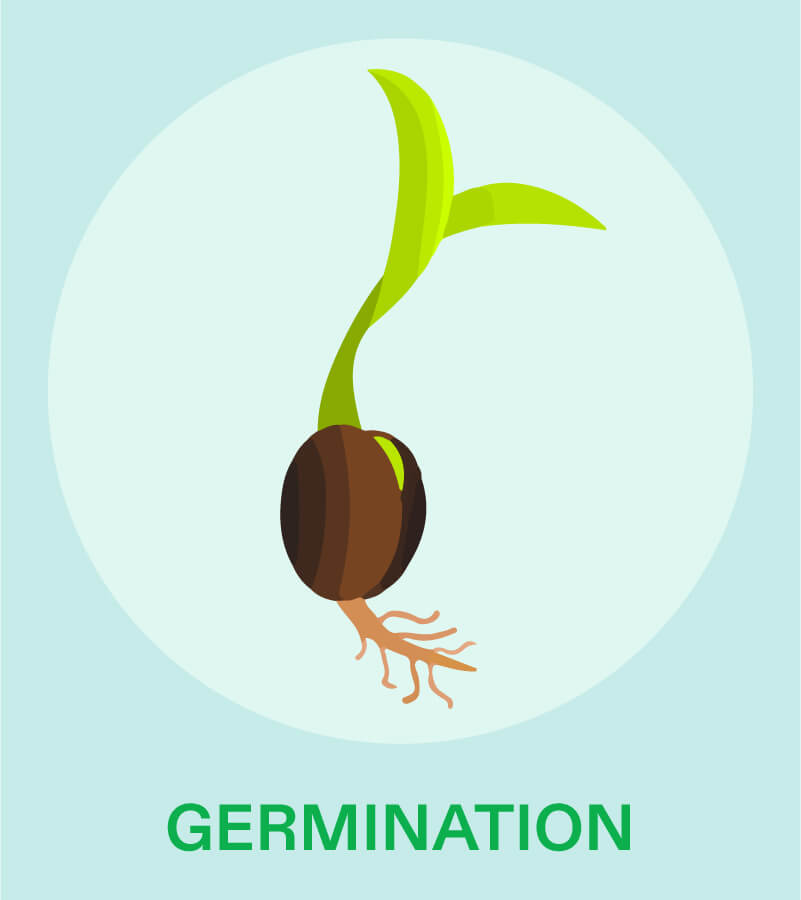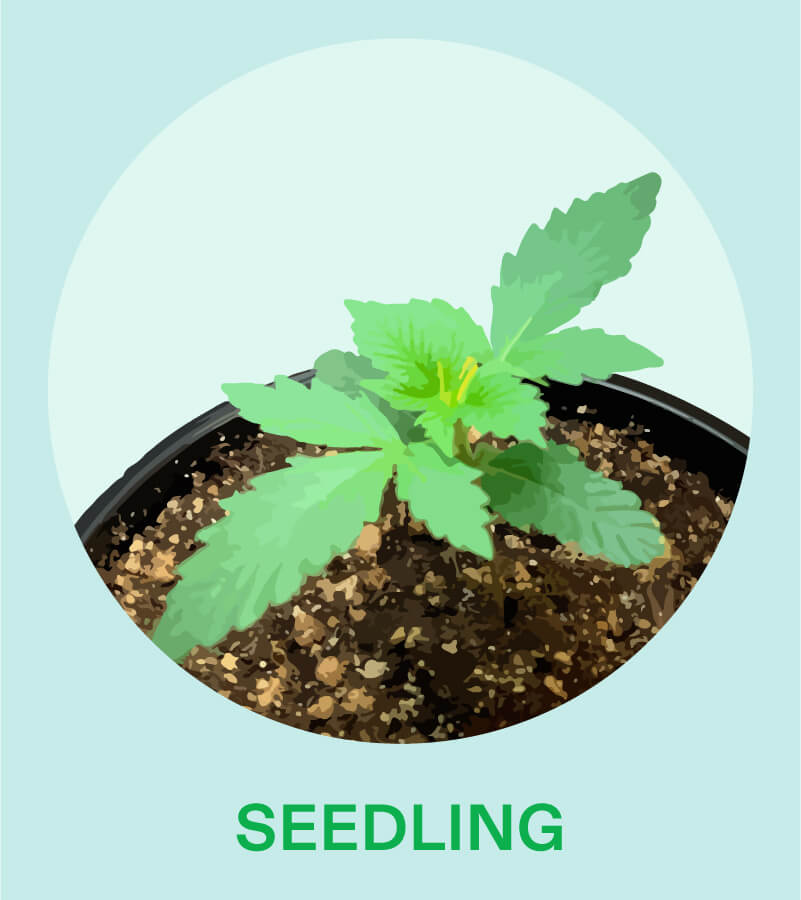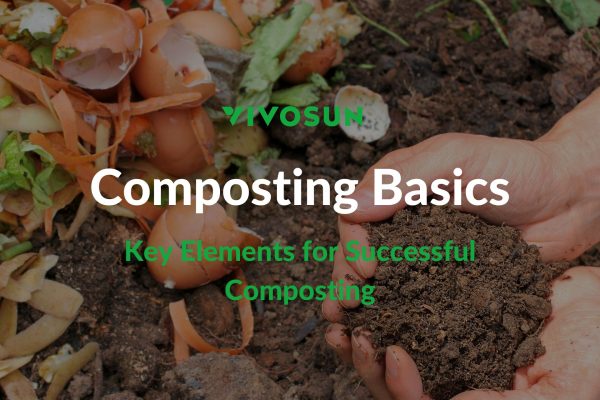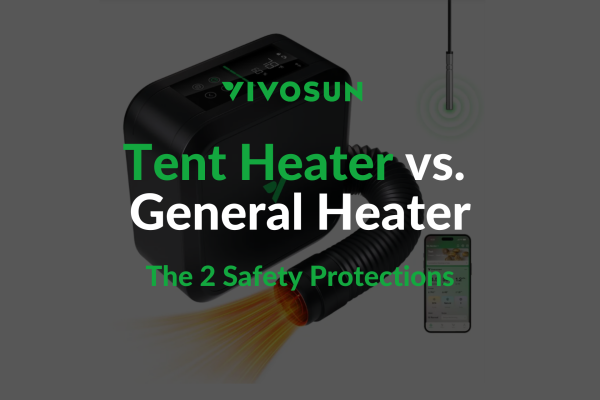Before we discuss how to make indoor plants grow faster, let’s go over the growth cycle of your plants. Usually, the average growth time of cannabis is somewhere between 3-6 months depending on your skill level, the type of weed you’re growing, the type of lighting you’re using, and a number of other factors that really come down to your own experience.
We divide cannabis’ growth into four stages (although “cultivating” includes more steps): germination, seedling, vegetative, and flower. Each of them has its own unique requirements regarding water, nutrients, temperature, light, and a few other points.
Learning their differences between each stage of growth can help you improve the health of your plants and, ultimately, the yields. If you are in a hurry to get your harvest, here are some tips that you can follow that minimize the damage to your plants and also make your plants grow faster!
Germination stage (1-7 days)-how to make indoor plants grow faster
To ensure the success of germination, you need to check the quality of your seeds. The high-quality seeds should be hard and dry, with the color varying from light brown to dark brown, often with a “tiger stripe” through the seed, while the seeds that are soft are less likely to germinate–the color of these low-quality seeds are probably going to be green or white.
How to make them grow faster? One popular method to speed up germination is to put them in a container filled with water for about 24 hours to stimulate the growth of the first taproot.
Another common technique you might remember from kindergarten is to wrap your seeds in a wet paper towel and to store it in a dark, moist environment (in a Ziploc bag away from direct sunlight). Once you see a taproot—a soft, white root, be sure to transfer your plant to either soil or Rockwool, otherwise your seed will quickly rot.
At this point you can put your seedling beneath a grow light but please note, do not place your lamp too close to your seedling because light and heat can burn your plant. A fluorescent grow light or an incandescent bulb is a good choice for the coming seedling stage.
Finally, if you plan to germinate your seed in the soil, you can stimulate growth by keeping the soil temperature between 68℉- 80℉. If you want to go this route, you’ll need a heat meat to reach that environmental control.

Seedling stage (2-3 weeks)-how to make indoor plants grow faster
When you start to see the first leaves appear you’ve officially entered the seedling stage, which usually lasts about 2-3 weeks. If your seeds have been in Rockwool, now is the time to transplant them into the soil.
Now how to make plants grow faster? Light plays an important role during this stage: you’ll need to make sure that your plants can receive around 18-24 hours of sunlight (usually 18 hours are sufficient as your plants need to rest). Second, your grow light should be about 24” away from your plants.
Your plants are so fragile at this stage that you need to keep an eye on them in case the light begins to burn your plants or the light is too weak to support the growth of your plants. You can continue using fluorescent bulbs or incandescent bulbs during this stage, but you could also switch to LEDs and run them at a lower brightness level. We need to also pay attention to the temperature, humidity, and Soil pH.
The ideal temperature for your plants is 77℉. The humidity level is between 65-80%. The pH levels should be between 6 and 7. Don’t overwater your seeds. You can water them with a sprayer when the soil gets dry so that you don’t allow standing water to rot the roots.
At this stage you need to put most of your energy into the survival of your plants: ensure enough sunlight, keep pests away with proper watering (don’t overwater), provide the needed fertilizer, and so on. There is little thing you can do to shorten the seedling stage.

Vegetative stage (2-8 weeks)-how to make indoor plants grow faster
When you can observe the first set of pointed leaves, congratulations! Your plants have passed through the seeding stage and entered the vegetative stage. They will have more environmental requirements and will grow fast during this stage. Now is the time to transplant them again into their final home so they can grow unrestrained.
Here are some that you can do to improve the speed of the veg stage, to make them grow faster. At this stage, you should be able to identify male and female plants by identifying whether the small nodes are female or male. Check online for pictures of this difference.
- Lights: We recommend an LED grow light during this period—but you can also use HID lamps. We don’t recommend using fluorescent or incandescent bulbs for the veg stage—they simply don’t produce enough energy. You can also adjust the height of your lights, placing them a little closer to your plants since they are capable to handle more light and heat (18”-24”). Your grow lights should operate around 16 hours a day—any more than that and they will likely be too stressed to be able to grow properly. Be sure to monitor the health of your plants throughout this period so you can adjust the height and diurnal periods. If your plants are doing well, you may be able to push the daytime cycle a little longer to encourage faster growth, but your plants will always need a nighttime period to synthesize sucrose.
- Temperature: During this period, your temperature range should be between 68℉-77℉. Some experienced growers lower the temperature by 10℉ during night cycles.
- Watering: Obviously you’ll need to water more during this period. Water the soil around the stem directly rather than letting the water run down leaves. Soak your soil and then don’t water until the soil is dry—overwatering is just as dangerous as underwatering.
- Airflow: Photosynthesis is vital to your plants. You need to set up a ventilation system so they can absorb enough carbon dioxide from the environment and a ventilation system is a way we circulate CO2 when growing indoors. Fresh air brings more CO2, helps your plants’ resilience, and encourages faster growth.
- Nutrients: Nutrients are extremely important during the vegetative stage. Nitrogen will definitely make your plants happy, so adding extra nitrogen to your soil along with your standard nutrient mixture can help a lot. Be sure to watch your plants when you feed—if they turn yellow, curl, or droop your nutrient mixture may be hurting your plants. Follow your nutrient guide during this period.

Flowering stage (6-10 weeks)-how to make indoor plants grow faster
If you haven’t yet, this is the moment you need to separate your male and female plants—most growers toss out their male plants because fertilized female plants grow seeds within the buds, which are unusable.
Let’s talk about nutrients during this stage: instead of offering nitrogen in the veg stage, you can offer phosphorus as a supplementary mineral. However, be careful when adding extra nutrients—just like in the vegetative stage, you shouldn’t over-feed your plants.
Further, near the end of the flowering stage, you’ll want to stop giving your plants nutrients altogether and flush the soil with reverse osmosis water. Regarding light, you will need to reduce the periods of sunlight to about 12 hours while increasing the wattage and emphasizing red light.
The flowering stage is the final stage but not the last step—you still have a lot to do! You’ll need to begin harvesting your plants, dry them in a cool, dark space, and trim them. Further, the flowering stage can be a lot more involved—you should be sure to adjust the light height, nutrient quantities, and watering cycles throughout the life of your plant.
We’ll soon have an entire guide for growing cannabis that will go into details about this stage of growth, but in the meantime, if you are looking for more information you’ll find a lot of great resources online. We only want to mention some factors that can accelerate the growth of your indoor plants—this list isn’t exhaustive.

Growing plants indoors can be challenging work that needs a lot of patience, but it is one of the most rewarding activities you can do. If you are new in this field, don’t rush growing—try to be precise, careful, and detail-oriented until you have a lot of experience because, in reality, experience is how you speed up your growing cycles more than any techniques you can read online.
If you try to rush through growing without knowing how the changes are affecting your plants you’ll probably end up with lower yields than if you took your time. Remember, the priority is to ensure a successful harvest.
If you have any questions, please don’t hesitate to reach out to us!
And be sure to check out our other blog posts for useful tips on becoming a great grower!
Subscribe to the VIVOSUN newsletter for growing tips, grower stories, and special offers, and get 12% off your first order!
We love the new VIVOSUN Smart Grow System and we are certain that you too will love it once you try it.
And join our Facebook farmer’s community for even more exclusive contests and prizes!
Download VIVOSUN App to get 18% off and explore more information!

You may also like:
What Should I Do if My Plants are Growing too Slowly
What are the Best Ways to Use LED Grow Lights for Indoor Growing






